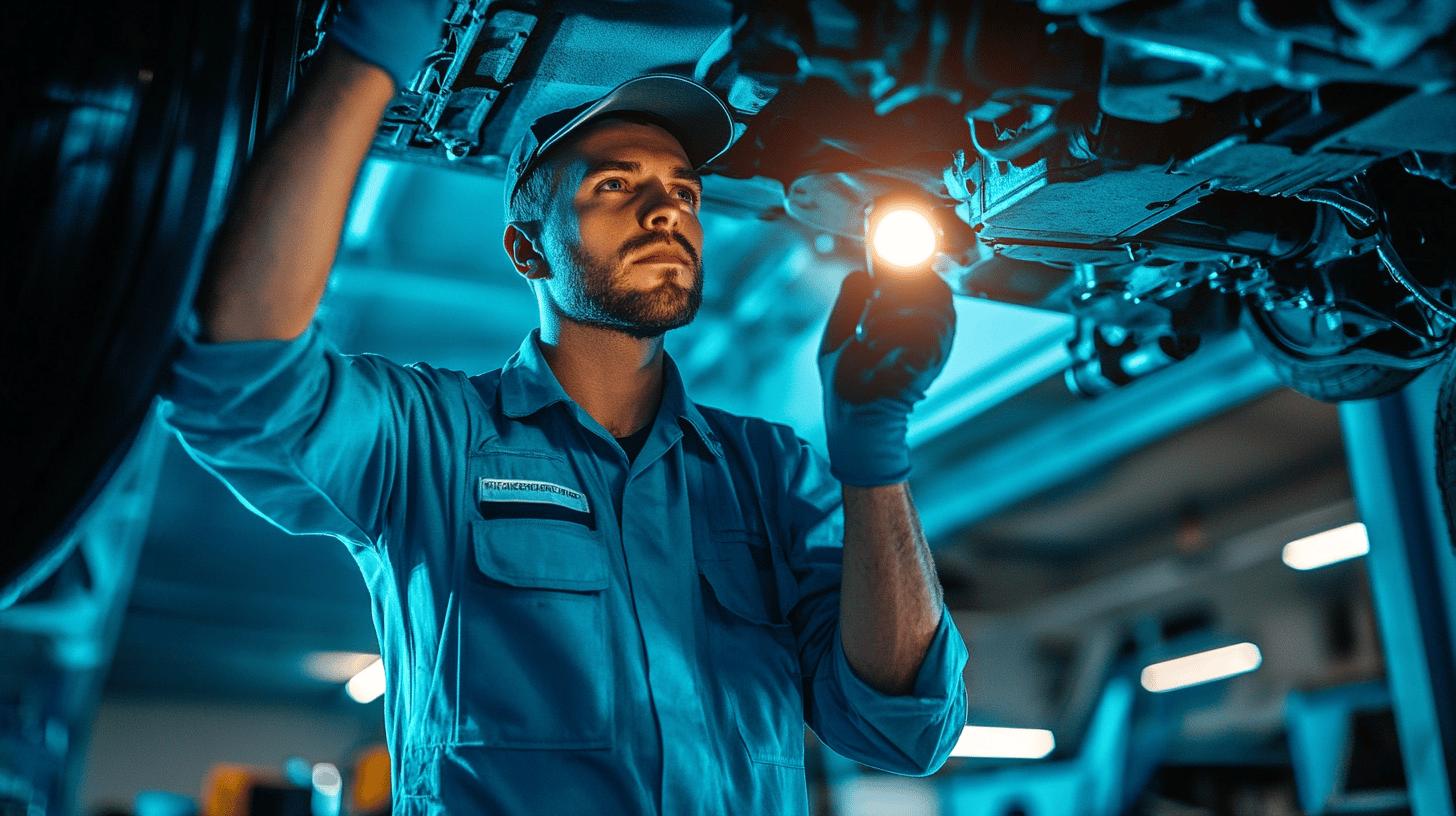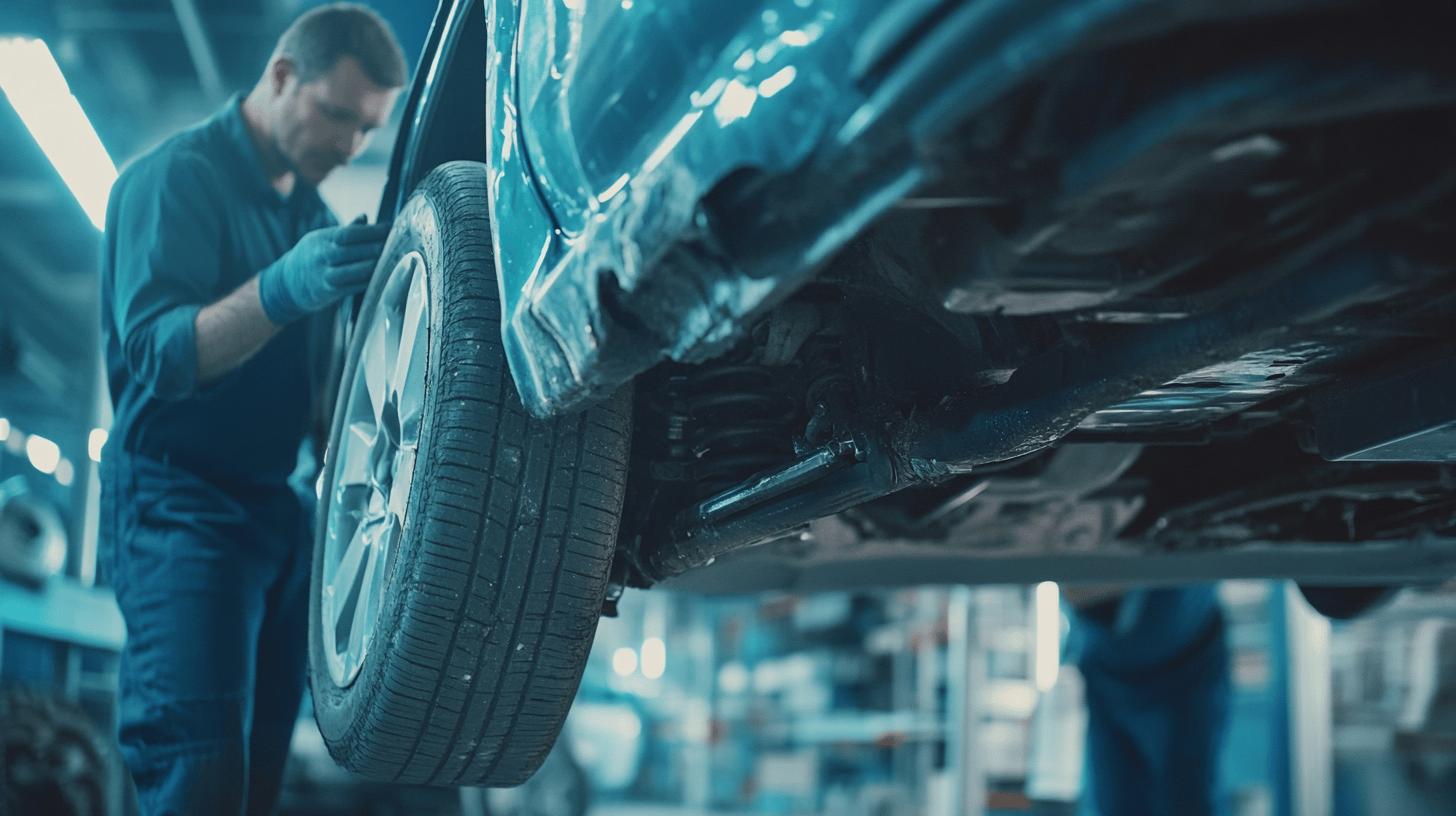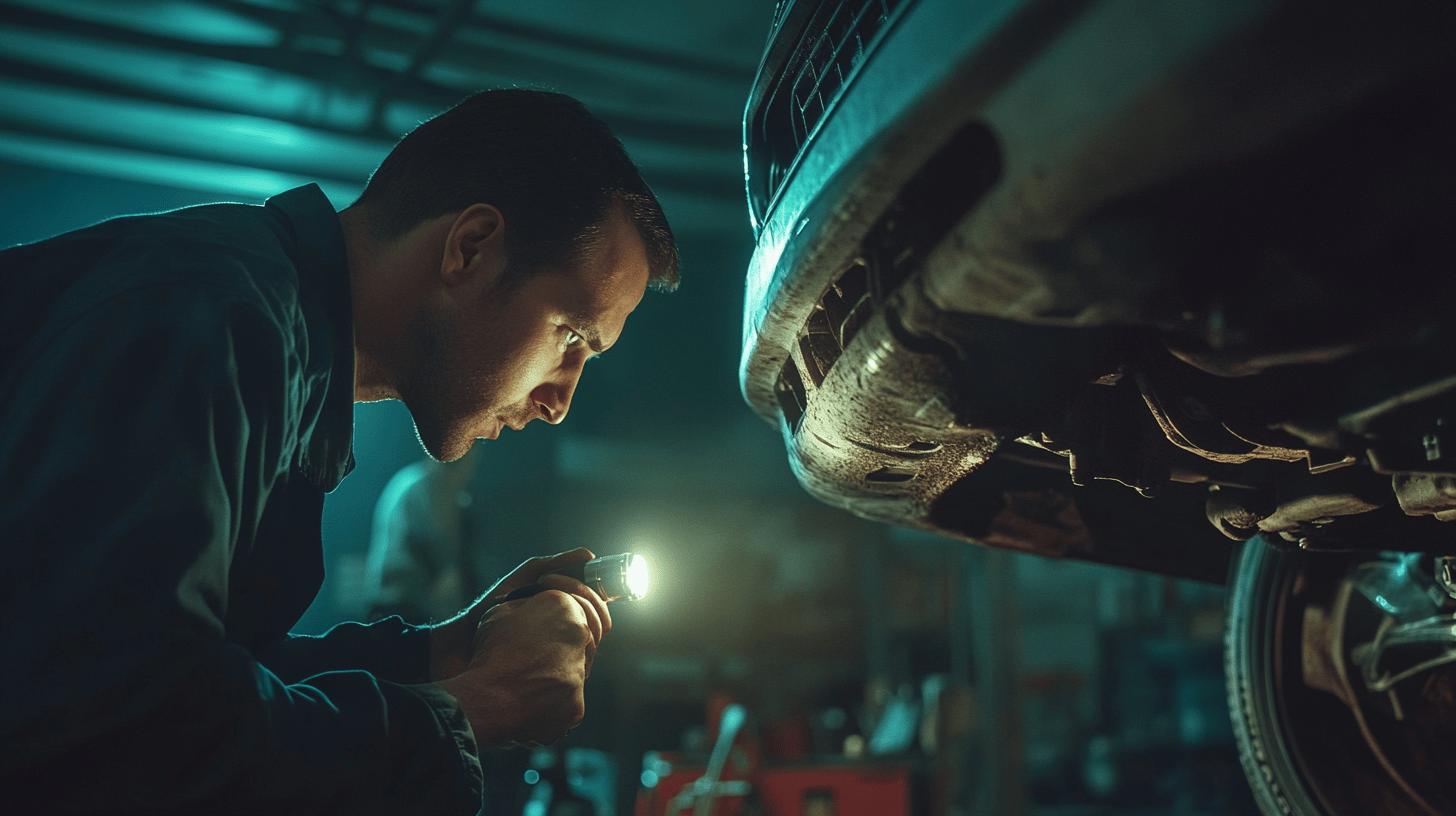Is your vehicle harbouring hidden collision damage that threatens its safety and performance? Often, the impact of an accident goes beyond visible dents and scratches, leaving potentially dangerous damage unnoticed. Undetected damage can compromise your car’s safety, reduce its value, and lead to further costly repairs if left unresolved. By delving into the realm of invisible damage, this article aims to shed light on the critical importance of early detection and professional assessment. Protect your vehicle’s integrity by staying informed about what lies beneath the surface.
Understanding Hidden Collision Damage
Hidden collision damage refers to the unseen harm a vehicle might suffer during an accident, which can significantly affect its safety and market value. Not all damage is immediately apparent after a collision; some issues may linger beneath the surface, posing potential risks if left unchecked. Over time, undetected car damage can lead to increased wear and tear, compromise safety features, and reduce the vehicle’s resale value. Therefore, addressing invisible damage promptly is crucial for maintaining both the structural integrity and overall performance of the vehicle.
Common types of hidden damage typically include frame misalignments, suspension issues, and internal component disruptions. Statistics indicate that a considerable percentage of rear-end collisions, approximately 20%, result in undetected damage. This percentage highlights the necessity for thorough inspections even after seemingly minor accidents. A vehicle might still be drivable, yet structural weaknesses or alignment problems could exist, affecting handling and potentially leading to more severe issues if not repaired.
Early detection of hidden collision damage is essential, as neglecting these issues can escalate repair costs and compromise safety. If left unaddressed, unseen damage can exacerbate over time, leading to larger mechanical failures or safety hazards on the road. Regular inspections and professional evaluations help identify and rectify these problems before they worsen, safeguarding the vehicle’s longevity and ensuring it remains safe to drive.
Identifying Signs of Hidden Collision Damage
Identifying signs of hidden collision damage after a vehicle accident is crucial for maintaining safety and performance. Common indicators include leaking fluids, which may suggest internal damage to components like the radiator or transmission. Dashboard warning lights, such as the check engine light, can activate when sensors detect anomalies post-collision. Additionally, strange noises or vibrations from the vehicle may point to underlying issues with the suspension or alignment that are not immediately visible.
- Leaking Fluids: Look for puddles under the car, which could indicate damaged seals or hoses.
- Dashboard Warning Lights: Keep an eye out for the check engine light or other alerts that might signal electronic or mechanical issues.
- Unusual Sounds or Vibrations: Listen for knocking or grinding noises, which may suggest problems with the engine or drivetrain.
- Alignment Issues: Notice if the vehicle pulls to one side or if the steering wheel is off-centre, indicating potential alignment problems.
- Steering Problems: Difficulty in steering or a loose steering wheel can signify damage to the steering system or suspension components.
These signs of hidden damage can negatively impact a vehicle’s overall performance and safety. For instance, alignment issues can hinder handling and increase tyre wear, while steering difficulties might compromise control over the vehicle. Unnoticed electrical problems, indicated by warning lights, could lead to more severe mechanical failures over time. Therefore, post-accident inspections are essential, and professional evaluations are recommended to ensure all hidden damages are identified and repaired promptly to maintain vehicular integrity and safety.
Inspection Techniques for Unseen Damage

Visual and undercarriage inspections are critical first steps in detecting hidden collision damage. These inspections involve scrutinising the vehicle’s exterior and underside to identify any apparent or subtle issues that could indicate deeper problems. For instance, a misalignment of body panels or unusual wear on tyres may suggest frame or suspension damage. Similarly, rust or dents on the undercarriage might point to structural weaknesses. Such inspections should be conducted promptly after an accident to avoid escalating issues and ensure the vehicle’s safety and performance remain uncompromised.
| Inspection Technique | Purpose |
|---|---|
| Visual Inspection | Identify obvious damage and misalignments |
| Undercarriage Inspection | Detect rust, dents, and structural issues |
| Diagnostic Tests | Uncover less visible electronic and mechanical faults |
| Professional Assessment | Comprehensive evaluation for all potential hidden damages |
Diagnostic tests play a crucial role in uncovering less obvious damage that might not be visible to the naked eye. These tests involve using specialised equipment to assess the vehicle’s electronic systems and mechanical components. For example, a diagnostic scan can reveal issues with the vehicle’s sensors or electronic control units, which might have been affected by the collision. This step is essential to ensure that all potential problems are identified and addressed before they develop into more serious issues.
Professional assessments are highly recommended for a thorough evaluation of hidden collision damage. Experts, such as those at velocitycarspray.co.uk, possess the necessary tools and experience to perform comprehensive inspections and repairs. Their expertise ensures that all aspects of the vehicle are checked and any damage is repaired to maintain the car’s integrity and safety. Prompt, professional evaluations help prevent costly repairs down the line and ensure the vehicle remains reliable and safe for road use.
Common Types of Hidden Damage
Structural issues can be insidious, lurking beneath a vehicle’s surface following a collision. Vehicle frame damage, often invisible at first glance, can undermine the car’s structural integrity and compromise safety. Suspension system problems and body panel damage are also common, each with its own set of potential risks and challenges.
Frame Damage
Frame damage is particularly concerning as it can affect the vehicle’s overall safety and performance. A compromised frame may lead to improper alignment of doors and latches, making them difficult to open or close securely. This kind of damage can also affect the car’s crumple zones, which are designed to absorb impact during a crash. If these zones are weakened, the vehicle may not provide adequate protection in future accidents. Thus, ensuring the frame’s integrity is vital for maintaining safety.
Suspension and Alignment Problems
Suspension and alignment problems often arise after a collision and can be difficult to detect without a professional inspection. These issues can significantly impact the vehicle’s handling, making it difficult to steer and increasing wear on tyres. A misaligned suspension system can cause the vehicle to pull to one side, leading to uneven tyre wear and potentially dangerous driving conditions. Since these problems may not be immediately visible, they require careful assessment to ensure the vehicle remains safe and stable on the road.
Body Panel and Paint Damage
Body panel and paint damage may seem superficial but can lead to more severe issues if ignored. Minor scratches and dents can expose the underlying metal to moisture, leading to rust and further deterioration over time. Once rust sets in, it can spread quickly, weakening the vehicle’s structure and reducing its aesthetic appeal and resale value. Addressing even minor body damage promptly is crucial to prevent long-term degradation and maintain the vehicle’s appearance and integrity.
The importance of addressing these hidden damages promptly cannot be overstated. Ignoring them can lead to further complications, increased repair costs, and compromised safety. Regular inspections and timely repairs are essential to ensure that any underlying issues are resolved quickly, preserving the vehicle’s integrity and ensuring safe operation.
The Collision Repair Process
The collision repair process begins with a thorough body shop evaluation to identify both visible and hidden damages. A professional inspection is essential to assess the extent of the damage and ensure that all issues are detected. This initial evaluation typically involves checking the vehicle’s structural integrity, alignment, and any potential internal component disruptions. Once the damages are identified, a comprehensive repair plan is developed to restore the vehicle to its pre-accident condition.
- Paint Work Repairs: Restores the vehicle’s exterior finish to its original state.
- Paintless Dent Removal: Removes minor dents without affecting the existing paintwork.
- Alloy Wheel Refurbishment: Repairs and refinishes damaged alloy wheels for both aesthetic and functional purposes.
- Bumper Repairs: Fixes cracks, scratches, and other damage to the bumper.
- Full Car Resprays: Offers a complete repainting of the vehicle for uniformity and aesthetic appeal.
Repair costs can vary significantly depending on the extent of the damage and the quality of the repair services chosen. Investing in quality repairs is crucial to ensure the vehicle’s longevity and safety. Opting for reputable service providers, like velocitycarspray.co.uk, guarantees a comprehensive repair that adheres to manufacturer standards. While upfront costs may be higher, the long-term benefits of maintaining vehicle integrity and preventing further issues make it a worthwhile investment.
Impact of Hidden Damage on Vehicle Value and Safety

Hidden collision damage can significantly decrease a vehicle’s resale value. Why? Because undetected issues might compromise the car’s structural integrity, leading to potential hazards that deter buyers. For instance, unseen frame damage could affect safety features, lowering the vehicle’s market appeal and reducing its worth. Additionally, such damage often results in performance issues that may not be immediately visible, further impacting value and increasing repair costs later on.
Preserving vehicle integrity is crucial for maintaining both safety and value. Regular inspections and prompt repairs are essential in identifying and rectifying hidden damage before it worsens. Engaging professional services ensures thorough evaluations and high-quality repairs, which are vital for keeping the vehicle roadworthy. By proactively addressing potential hazards, owners can prevent escalated damage, thereby preserving the vehicle’s safety and market value in the long run.
Final Words
In tackling the issue of hidden collision damage, it becomes evident that unseen car damage poses significant risks to safety and vehicle value. Identifying indicators, such as dashboard warning lights and alignment changes, highlights the need for prompt inspection following any accident. Effective inspection techniques, including visual checks and professional assessments, are critical in uncovering less obvious damage.
Understanding common forms of hidden damage, like structural or suspension problems, reinforces the necessity for comprehensive repair. By prioritising early detection and quality repairs, drivers can mitigate risks and maintain their vehicle’s integrity. Addressing hidden collision damage is crucial not only for safety but also for preserving long-term value.
Ensure your vehicle’s safety – Contact us for a thorough post-collision inspection today!
FAQ
Q: What is hidden collision damage?
A: Hidden collision damage refers to unseen damage from accidents that can affect a vehicle’s safety, performance, and value, stressing the need for early detection and repair.
Q: What types of hidden damages occur after a car accident?
A: Common hidden damages include structural frame issues, suspension and alignment problems, and body panel damage, which can affect overall safety and handling.
Q: How can minor accidents cause hidden damage?
A: Even minor accidents can result in hidden damage, such as alignment issues, which can compromise handling, or electrical faults caused by impact.
Q: What signs might indicate hidden collision damage?
A: Look for leaking fluids, dashboard warning lights, unusual noises or vibrations, alignment issues, and steering difficulties as indicators of hidden collision damage.
Q: How do you know if an engine is damaged after an accident?
A: Signs of engine damage may include unusual sounds, performance loss, or dashboard warning lights indicating trouble.
Q: What inspection techniques can help detect unseen damage?
A: Techniques include visual and undercarriage inspections, diagnostic tests, and professional assessments to identify and evaluate hidden issues accurately.
Q: What should I do if my vehicle has hidden damage from being rear-ended?
A: Have a professional inspection carried out to address any unseen damage that might affect safety, such as structural or component misalignments.
Q: How can front-end collision hidden damage affect my vehicle?
A: Such damage can compromise the vehicle’s frame or impact its operational components, jeopardising safety and functionality.
Q: What does collision damage mean?
A: Collision damage encompasses any harm sustained by a vehicle in an accident, potentially affecting structural integrity and component operation.
Q: What is the most damaging type of collision?
A: The most damaging collisions often involve significant structural impact, such as head-on collisions, which can lead to severe damage and safety risks.
Q: How can hidden damage affect vehicle value and safety?
A: Undetected damage can reduce resale value and introduce safety risks, stressing the importance of timely inspections and repairs to maintain vehicle integrity.

